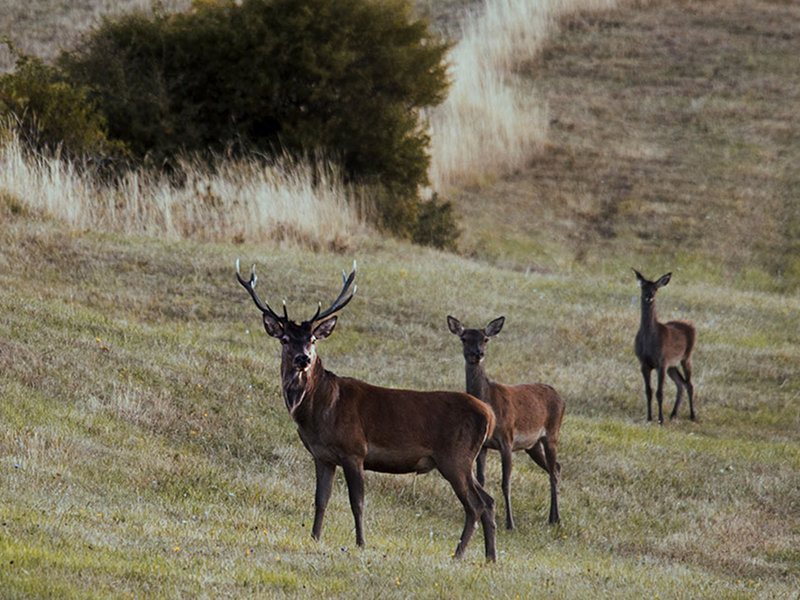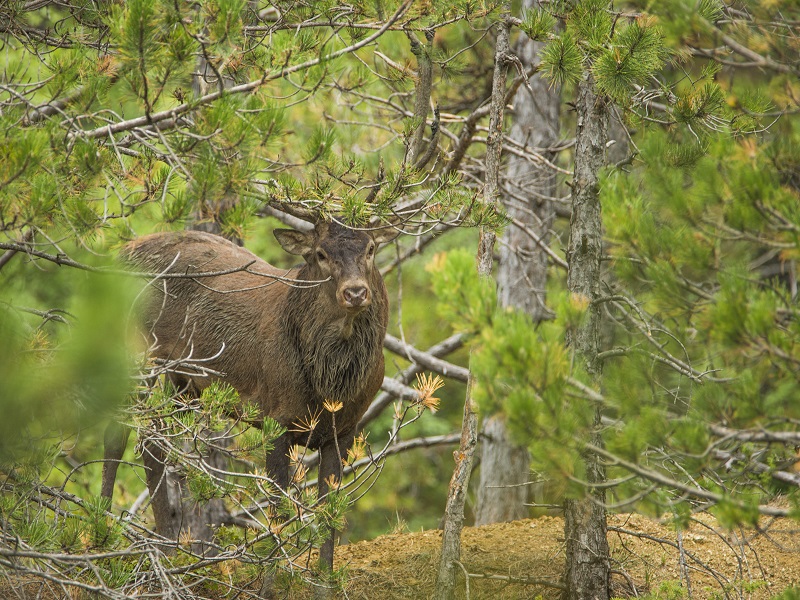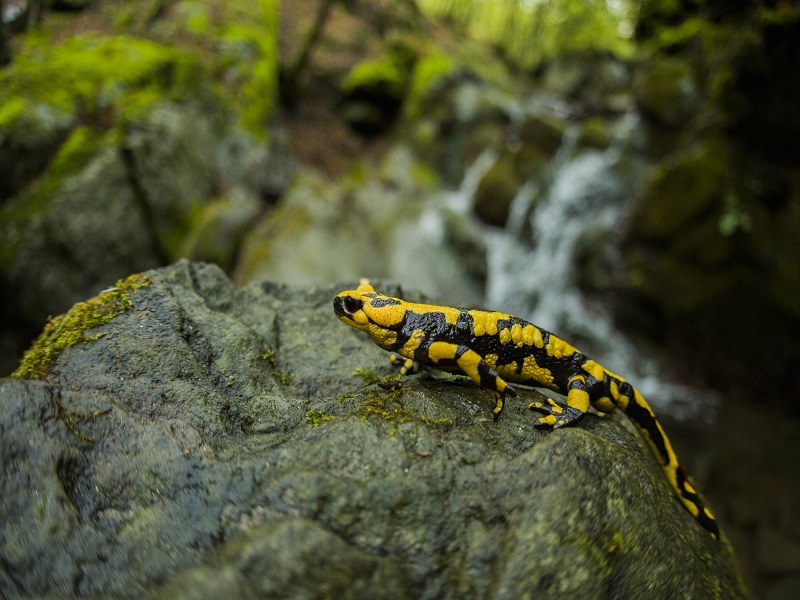Home » Nature and Territory » Parco Regionale dei Laghi di Suviana e Brasimone » Protected Area
Fauna
Of all the mammals, the park's most representative species is certainly the red deer, which has returned to inhabit these mountains over the last several decades.
The specimens that now live here derive from the few deer that the State Forestry Corps released into the upper Pistoia area, within the Acquerino state-owned forest, in 1958 and 1965. This is a high-quality deer population, featuring large-sized males with antlers that are well-branched.
The park's territory represents the red deer's main mating area within the Emilian side of the species' natural range: a large number of breeding deer will gather here for a few weeks in early fall, arriving even from far away.
Raptor species that live in the park include the kestrel, common buzzard, sparrowhawk and tawny owl. The European honey buzzard also regularly nests in the park.
As in other areas of the northern Apennines, young specimens of the golden eagle can be frequently seen in the park, although it does not breed here.
One of the key amphibians in the park is the fire salamander, with its brilliant yellow and black colored skin. It is a rare species that lives along the Apennine ridge in beech forests with clear mountain brooks (where its larvae develop during the summer).
Another terrestrial amphibian is the cave salamander, which is lungless and lives exclusively in damp underground environments, where it deposits its eggs and where it finds refuge during hot, dry periods. In the park, it is commonly found in wooded areas where there are highly stratified rocky outcrops with lots of crevices. Other urodeles that can be found in the park include the northern crested newt, the smooth newt and the alpine newt, which inhabit waterholes, troughs and small, even temporary, pools of water.
Anurans that are present in the park include the Italian stream frog, which typically inhabits the creeks and streams of the Apennines, and the agile frog, which prefers woods and fields and which lays its large egg masses in pools of standing water, where the green frog also lives. Species that are less water-dependent include the common toad and the Italian tree frog, which inhabit the hills and the lowlands.
As to reptiles, which generally prefer sunny habitats that are rich in vegetation and far away from human interference, the park is home to all the species that typically live in mountain and high hillside environments. One can easily spot the common wall lizard and the western green lizard, whereas the slowworm is certainly more elusive.
The agile and aggressive western whip snake, with its yellow and black coloring, and the grass snake are the most common ophidians in the park.
It is more difficult to spot the Aesculapian snake, with its yellow-olive green coloring, and the asp viper, which is the only snake in the park that poses a threat to humans. It is easily recognizable due to its slow movements, its short and stocky body and its arrowhead-shaped head.
The most common fish species in the park's streams is the river trout, a salmonide that has adapted perfectly to the cold and oxygen-rich mountain waters. At lower altitudes there are smaller species, such as the Italian vairone and the goby. Certain streams are home to large populations of white-clawed crayfish, an indicator species for water quality that in recent decades has gradually disappeared from many waterways in the Apennines.
2025 © Ente di gestione per i Parchi e la Biodiversità - Emilia Orientale
Piazza XX Settembre, 1 - 40043 Marzabotto (BO)
Tel. +39 051 6701260-6254811 - Fax +39 051 6254521
E-mail protocollo@enteparchi.bo.it - PEC enteparchibo@cert.provincia.bo.it
P.IVA CF 03171551207
Codice univoco per la fatturazione elettronica: UF2KK4
E-mail protocollo@enteparchi.bo.it - PEC enteparchibo@cert.provincia.bo.it
P.IVA CF 03171551207
Codice univoco per la fatturazione elettronica: UF2KK4





